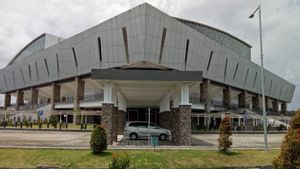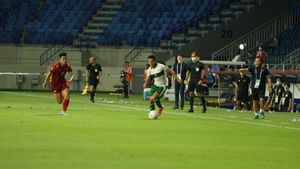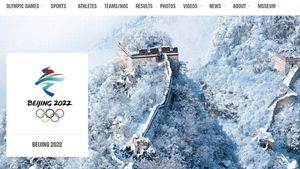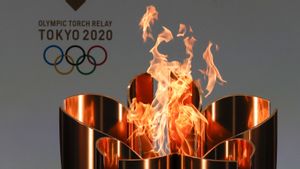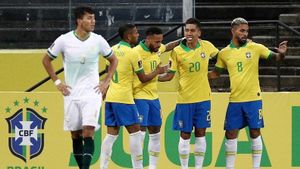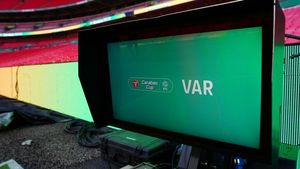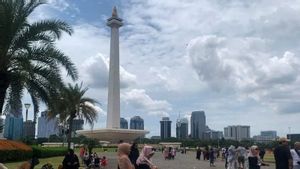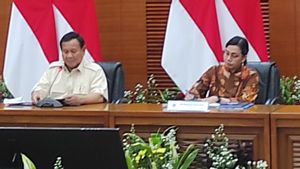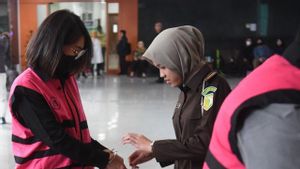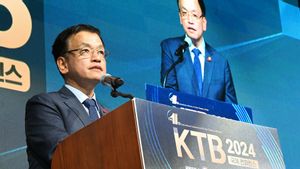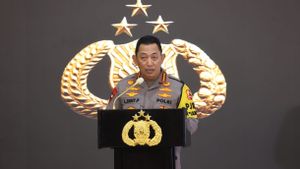JAKARTA - The Tokyo Olympics organizing committee said they would delay the release of ticket draw results until Saturday, July 10 as the Japanese capital is grappling with a surge in COVID-19 cases and it is likely that the number of spectators allowed into each venue will be reduced, Kyodo reported, Monday.
The committee originally planned to release the results on Tuesday, July 6. Olympic organizers are also scheduled to meet this week to review the policy of allowing up to 10.000 spectators per arena.
In a related development, the governor of Hokkaido on Monday asked the organizing body to consider holding marathons and brisk walks in Sapporo, the capital of Japan's northernmost main island, without roadside spectators in an effort to curb the spread of COVID-19.
SEE ALSO:
Hokkaido Governor Naomichi Suzuki met with committee officials, including Deputy Director-General Hiroshi Sato, requesting that they implement strict COVID-19 prevention measures and prevent people from gathering on the roadside for the Aug 5-8 event.
As the surge in cases in Tokyo is driven by a highly contagious variant of the virus, organizers are expected to review the audience limit agreed late last month, which allows venues to be filled to 50 percent of capacity with a maximum of 10.000 people.
A draw among ticket holders to determine whether they can attend the match, including the opening and closing ceremonies, has been held.
If organizers decide to hold the Olympics, which start on July 23, without spectators in the stands, Suzuki said he wants the policy to be implemented everywhere, not just in Tokyo.
Suzuki became the latest governor to urge organizers to tighten their spectator policies. The governors of Chiba and Saitama prefectures in Tokyo have called for events after 9 p.m. to be held behind closed doors.
Suzuki hopes organizers can encourage people to watch the marathon on TV instead of attending along the route.
The Olympics will take place in 10 of Japan's 47 prefectures. The men's and women's marathons and brisk walks were moved to Sapporo in 2019 due to fears of the capital's extreme summer.
About 40 percent of the sessions, or time slots, of the Olympics are expected to be held without spectators if the after 9 p.m. policy is closed and the attendance limit of 10.000 people per venue is lowered to 5.000 people per venue, according to officials involved in the policy's planning process.
The current policy is set in line with the Japanese government's policy of limiting audiences for major events in the country on the premise that Tokyo will no longer be under a pseudo-state of emergency after July 11.
However, Japan is likely to maintain a state of emergency, which covers the Tokyo metropolitan area, during the Olympics, government officials said Sunday.
Under the state of emergency, the number of people allowed to attend sporting events or other large events is limited to 50 percent of the venue's capacity with an upper limit of 5.000 people.
The five organizing bodies, including the International Olympic Committee (IOC), and the central and city governments of Tokyo, will meet as early as Thursday to review attendance limits.
On that day, the government can officially decide on the extension of the pseudo-state of emergency, and the IOC president is scheduled to arrive in Japan.
The English, Chinese, Japanese, Arabic, and French versions are automatically generated by the AI. So there may still be inaccuracies in translating, please always see Indonesian as our main language. (system supported by DigitalSiber.id)



